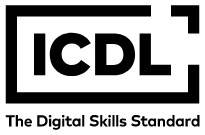Mapping Research on mHealth and Wearable Technologies in Sports and Gaming: A Bibliometric and Visualization Approach (2005– 2025)
Abstract
Recent years have seen a surge in the development of wearable health technologies for real-time monitoring, personalized intervention, and gamification in sports and healthcare. However, research in this domain remains fragmented across themes and applications. This study presents a bibliometric overview of research trends, collaboration patterns, and emergent themes in mHealth and wearable technologies within sports and gaming literature from 2005 to 2025. Using bibliometric analysis, we extracted data from the Scopus database, selecting 793 documents from 455 sources based on the keywords “sports” OR “games” AND “wearable health” OR “mHealth.” The PRISMA methodology was used for refining the dataset to include only articles, book chapters, and conference papers. To analyze research trends, co-authorship networks, and keyword co-occurrence patterns, we employed VOSviewer, CiteSpace, and Biblioshiny. The results indicate an annual growth rate of 7.18%, with research peaking in 2023. Collaboration analysis reveals an international co-authorship rate of 21.19%, with an average of 4.77 authors per publication. The keyword co-occurrence network highlights "mHealth," "wearable sensors," "gamification," and "artificial intelligence" as dominant research themes, with mental health interventions and cognitive training emerging as new areas of focus. The study also identifies Hlavacs H. and Jiang Y. as the most influential authors and JMIR mHealth and uHealth as the most prolific journal with 31 publications in this domain. These findings underscore the interdisciplinary and collaborative nature of research in mHealth and wearable technologies for sports and gaming. Future research should focus on AI integration, equitable access, and long-term impact assessments to fully leverage the potential of these technologies in enhancing health outcomes and sports performance.
Full Text:
PDFReferences
J. Joseph, J. Jose, D. John, and S. V. Nair, “QUANTIFYING THE IMPACT OF WEARABLE HEALTH MONITORING AND MACHINE LEARNING RESEARCH: A BIBLIOMETRIC ANALYSIS,” . Vol., no. 19, 2023.
G. MacKinnon and E. Brittain, “mHealth Technologies in Cardiopulmonary Disease.,” Chest, Mar. 2020, doi: 10.1016/j.chest.2019.10.015.
K. Riffenburg and N. Spartano, “Physical activity and weight maintenance: the utility of wearable devices and mobile health technology in research and clinical settings,” Current Opinion in Endocrinology & Diabetes and Obesity, vol. 25, p. 310, Oct. 2018, doi: 10.1097/MED.0000000000000433.
F. Lobelo et al., “The Wild Wild West: A Framework to Integrate mHealth Software Applications and Wearables to Support Physical Activity Assessment, Counseling and Interventions for Cardiovascular Disease Risk Reduction.,” Progress in cardiovascular diseases, vol. 58 6, pp. 584–594, May 2016, doi: 10.1016/j.pcad.2016.02.007.
N. Peever, K. Vella, D. Johnson, B. Ploderer, M. Klarkowski, and J. Mitchell, “Understanding initial experiences with Mindmax, an mHealth app that draws on shared interests in sports and video games,” Proceedings of the 29th Australian Conference on Computer-Human Interaction, Nov. 2017, doi: 10.1145/3152771.3156152.
S. Yang, “Mobile Health (mHealth) Apps for Improved Health in Medicine,” May 2014, [Online]. Available: https://consensus.app/papers/mobile-health-mhealth-apps-for-improved-health-in-medicine-yang/b86d46b5cc81504abfb7fef61dc68120/
P. Perego, “Device for mHealth,” m_Health Current and Future Applications, 2019, doi: 10.1007/978-3-030-02182-5_6.
W. Hong, “Advances and Opportunities of Mobile Health in the Postpandemic Era: Smartphonization of Wearable Devices and Wearable Deviceization of Smartphones,” JMIR mHealth and uHealth, vol. 12, May 2023, doi: 10.2196/48803.
G. Choudhari, P. Wagh, V. Choudhari, A. Gawade, R. Gadhave, and C. Bobade, “Wearable Devices and mHealth: The Significant Applications in COVID 19 Pandemic,” Journal of Pharmaceutical Research International, Mar. 2022, doi: 10.9734/jpri/2022/v34i21b35843.
C. Goldfine, J. Lai, E. Lucey, M. Newcomb, and S. Carreiro, “Wearable and Wireless mHealth Technologies for Substance Use Disorder,” Current Addiction Reports, pp. 1–10, Jun. 2020, doi: 10.1007/s40429-020-00318-8.
F. Lucivero and K. Jongsma, “A mobile revolution for healthcare? Setting the agenda for bioethics,” Journal of Medical Ethics, vol. 44, pp. 685–689, Jun. 2018, doi: 10.1136/medethics-2017-104741.
M. Rodgers, V. Pai, and R. Conroy, “Recent Advances in Wearable Sensors for Health Monitoring,” IEEE Sensors Journal, vol. 15, pp. 3119–3126, Jun. 2015, doi: 10.1109/JSEN.2014.2357257.
S. Ye, S. Feng, L. Huang, and S. Bian, “Recent Progress in Wearable Biosensors: From Healthcare Monitoring to Sports Analytics,” Biosensors, vol. 10, Dec. 2020, doi: 10.3390/bios10120205.
W. Sun et al., “A Review of Recent Advances in Vital Signals Monitoring of Sports and Health via Flexible Wearable Sensors,” Sensors (Basel, Switzerland), vol. 22, Oct. 2022, doi: 10.3390/s22207784.
R. Li, S. Kling, M. Salata, S. Cupp, J. Sheehan, and J. Voos, “Wearable Performance Devices in Sports Medicine,” Sports Health, vol. 8, pp. 74–78, Jan. 2016, doi: 10.1177/1941738115616917.
D. Seshadri et al., “Wearable sensors for monitoring the internal and external workload of the athlete,” NPJ Digital Medicine, vol. 2, Jul. 2019, doi: 10.1038/s41746-019-0149-2.
R. Kher, “Mobile and E-Healthcare: Recent Trends and Future Directions,” Medical economics, vol. 2, 2016, doi: 10.21767/2471-9927.100010.
D. Taralunga and B. Florea, “A Blockchain-Enabled Framework for mHealth Systems,” Sensors (Basel, Switzerland), vol. 21, Apr. 2021, doi: 10.3390/s21082828.
F. J. Agbo, S. S. Oyelere, J. Suhonen, and M. Tukiainen, “Scientific production and thematic breakthroughs in smart learning environments: a bibliometric analysis,” Smart Learning Environments, vol. 8, no. 1, p. 1, Jan. 2021, doi: 10.1186/s40561-020-00145-4.
N. Abas, H. Hussin, N. M. Hardi, and N. Hashim, “Exploring the interconnection of social media, mental health and youth: A bibliometric analysis,” Social and Management Research Journal, 2023, doi: 10.24191/smrj.v20i2.24401.
G. Agac, F. Sevim, O. Celik, S. Bostan, R. Erdem, and Y. I. Yalcin, “Research hotspots, trends and opportunities on the metaverse in health education: a bibliometric analysis,” LHT, Jul. 2023, doi: 10.1108/LHT-04-2023-0168.
S. Cherian, J. Joseph, B. Thomas, and J. Jose, “Navigating the New Normal: A Bibliometric Analysis of Masked Face Recognition Research Using VOSviewer and Biblioshiny”.
B. Thomas, J. Joseph, and J. Jose, “Explorative Bibliometric Study of Medical Image Analysis: Unveiling Trends and Advancements,” SV, vol. 15, no. 5, pp. 35–49, Dec. 2023, doi: 10.26583/sv.15.5.04.
I. Irwanto, A. Saputro, W. Widiyanti, and S. Laksana, “Global Trends on Mobile Learning in Higher Education: A Bibliometric Analysis (2002-2022),” International Journal of Information and Education Technology, vol. 13, pp. 373–383, Feb. 2023, doi: 10.18178/ijiet.2023.13.2.1816.
B. Cappelletti-Montano, S. Columbu, S. Montaldo, and M. Musio, “New perspectives in bibliometric indicators: Moving from citations to citing authors,” Journal of Informetrics, vol. 15, no. 3, p. 101164, Aug. 2021, doi: 10.1016/j.joi.2021.101164.
S. K. Banshal, M. K. Verma, and M. Yuvaraj, “Quantifying global digital journalism research: a bibliometric landscape,” LHT, vol. 40, no. 5, pp. 1337–1358, Nov. 2022, doi: 10.1108/LHT-01-2022-0083.
N. Donthu, S. Kumar, N. Pandey, and P. Gupta, “Forty years of the International Journal of Information Management: A bibliometric analysis,” International Journal of Information Management, vol. 57, p. 102307, Apr. 2021, doi: 10.1016/j.ijinfomgt.2020.102307.
V. Devaki, D. E. Ramganesh, and D. S. Amutha, “Bibliometric Analysis on Metacognition and Self-Regulation Using Biblioshiny Software,” Indian Journal of Information Sources and Services, vol. 14, no. 2, pp. 115–125, Jun. 2024, doi: 10.51983/ijiss-2024.14.2.17.
P. Thangavel and B. Chandra, “Two decades of M-commerce consumer research: A bibliometric analysis using R biblioshiny,” Sustainability, vol. 15, no. 15, p. 11835, 2023.
J. Joseph and K. Kartheeban, “Visualizing the Impact of Machine Learning on Cardiovascular Disease Prediction: A Comprehensive Analysis of Research Trends,” SV, vol. 16, no. 5, pp. 1–21, Dec. 2024, doi: 10.26583/sv.16.5.01.
J. John, J. Joseph, L. Mathew, S. James, and J. Jose, “Exploring the Predictive Analytics Frontier in Business: A Bibliometric Journey,” J Scientometric Res., vol. 13, no. 2, pp. 365–381, Aug. 2024, doi: 10.5530/jscires.13.2.29.
J. Joseph, B. Thomas, J. Jose, and N. Pathak, “Decoding the growth of multimodal learning: A bibliometric exploration of its impact and influence,” Int. Dec. Tech., vol. 18, no. 1, pp. 151–167, Feb. 2024, doi: 10.3233/IDT-230727.
H. Ejaz et al., “Bibliometric analysis of publications on the omicron variant from 2020 to 2022 in the Scopus database using R and VOSviewer,” International Journal of Environmental Research and Public Health, vol. 19, no. 19, p. 12407, 2022.
T. A. Fauzan and E. S. Soegoto, “COMPUTATIONAL BIBLIOMETRIC ANALYSIS OF EDUCATION TECHNOLOGY USING VOSVIEWER APPLICATION WITH PUBLISH OR PERISH (USING GOOGLE SCHOLAR DATA),” vol. 18, 2023.
Y. Yu et al., “A bibliometric analysis using VOSviewer of publications on COVID-19,” Ann Transl Med, vol. 8, no. 13, pp. 816–816, Jul. 2020, doi: 10.21037/atm-20-4235.
N. J. van Eck and L. Waltman, “Software survey: VOSviewer, a computer program for bibliometric mapping,” Scientometrics, vol. 84, no. 2, pp. 523–538, Aug. 2010, doi: 10.1007/s11192-009-0146-3.
J. Zhang, F. Quoquab, and J. Mohammad, “Plastic and sustainability: a bibliometric analysis using VOSviewer and CiteSpace,” AGJSR, vol. 42, no. 1, pp. 44–67, Jan. 2024, doi: 10.1108/AGJSR-10-2022-0225.
R. Maryanti, A. B. D. Nandiyanto, A. Hufad, S. Sunardi, D. N. A. Husaeni, and D. F. A. Husaeni, “A COMPUTATIONAL BIBLIOMETRIC ANALYSIS OF SCIENCE EDUCATION RESEARCH USING VOSVIEWER,” vol. 18, 2023.
J. Joseph, J. Jose, A. S. Jose, and G. G. Ettaniyil, “DECODING ADVERSARIAL MACHINE LEARNING: A BIBLIOMETRIC PERSPECTIVE,” . Vol., no. 3.
Y. Geng, X. Zhang, J. Gao, Y. Yan, and L. Chen, “Bibliometric analysis of sustainable tourism using CiteSpace,” Technological Forecasting and Social Change, vol. 202, p. 123310, May 2024, doi: 10.1016/j.techfore.2024.123310.
A. Lukose, J. John, D. Joseph, and J. Joseph, “The Rise of Open Banking: A Comprehensive Analysis of Research Trends and Collaborative Networks,” International Journal of Economics and Financial Issues, vol. 15, pp. 295–307, Dec. 2024, doi: 10.32479/ijefi.17407.
M. Synnestvedt, C. Chen, and J. Holmes, “CiteSpace II: Visualization and Knowledge Discovery in Bibliographic Databases,” AMIA ... Annual Symposium proceedings / AMIA Symposium. AMIA Symposium, vol. 2005, pp. 724–8, Feb. 2005.
W. Sun et al., “Bibliometric and visual analysis of transcranial direct current stimulation in the web of science database from 2000 to 2022 via CiteSpace,” Frontiers in Human Neuroscience, vol. 16, 2022, doi: 10.3389/fnhum.2022.1049572.
J. Joseph, J. Jose, A. S. Jose, G. G. Ettaniyil, J. John, and P. D. Nellanat, “UNVEILING THE RESEARCH IMPACT: A VISUALIZATION STUDY OF CHATGPT’S INFLUENCE ON THE SCIENTIFIC LANDSCAPE,” . Vol., no. 22, 2023.
J. Joseph, J. Jose, A. S. Jose, G. G. Ettaniyil, and S. V. Nair, “A scientometric analysis of bibliotherapy: mapping the research landscape,” Library Hi Tech, vol. ahead-of-print, no. ahead-of-print, Jan. 2024, doi: 10.1108/LHT-08-2023-0341.
DOI: https://doi.org/10.31449/inf.v49i23.7960

This work is licensed under a Creative Commons Attribution 3.0 License.









